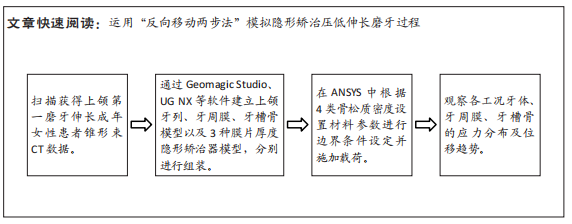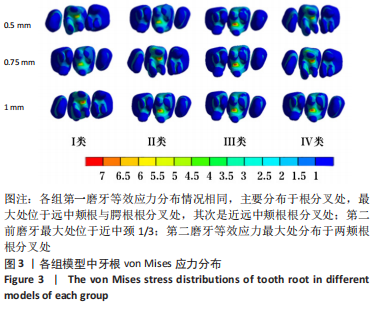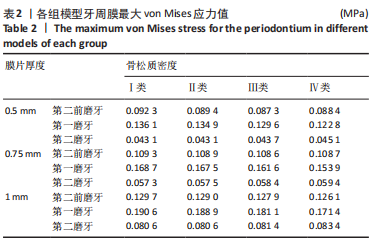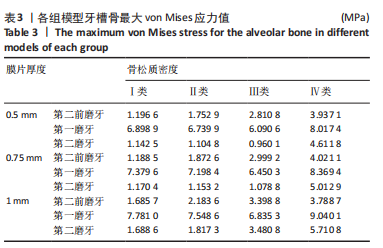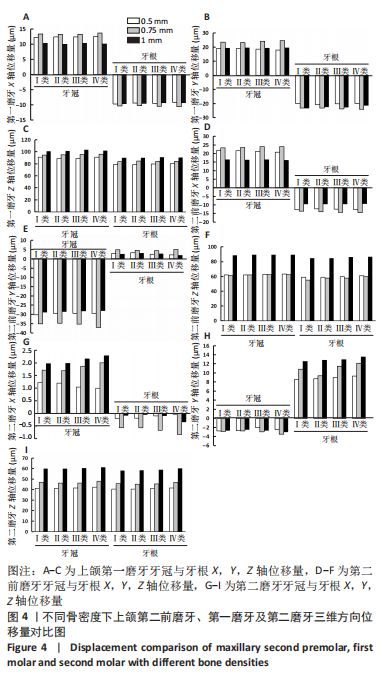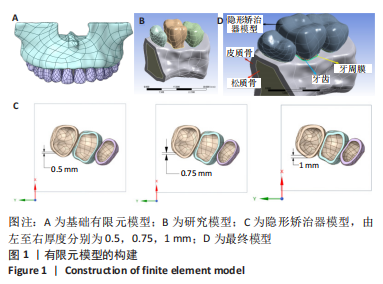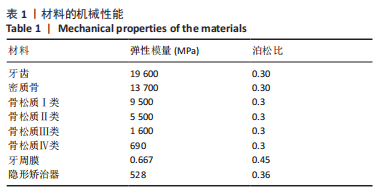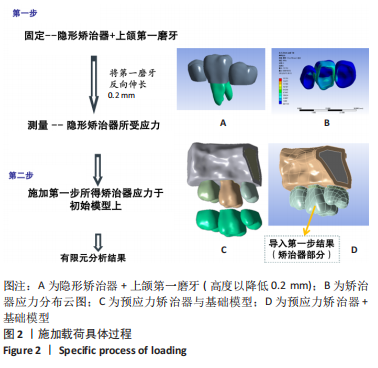[1] GRECO M, ROSSINI G, ROMBOLÀ A. Simplifying the approach of open bite treatment with aligners and selective micro-osteoperforations: An adult case report. Int Orthod. 2021;19(1):159-169.
[2] 瞿然奕,汪席均,江凌勇.垂直向控制在矫正成人骨性Ⅱ类高角错(牙合)畸形应用中的研究进展[J].中国口腔颌面外科杂志,2021,19(3):284-288.
[3] 赖玲芝,吴欣帆,陈空,等.正畸微种植钉压低上颌伸长磨牙的临床研究[J].中国临床解剖学杂志,2021,39(4):477-479+483.
[4] 顾泽旭.无托槽隐形矫治的支抗控制及临床策略[J].中华口腔医学杂志,2020, 55(8):531-535.
[5] 向彪,王星星,王梦含,等.无托槽隐形矫治正畸牙齿材料及生物力学性能分析[J].全科口腔医学电子杂志,2020,7(5):29-30+46.
[6] 李光辉.膜片厚度对牙移动效果影响的实验研究[D].上海:上海交通大学,2016.
[7] SIMON M, KEILIG L, SCHWARZE J, et al. Forces and moments generated by removable thermoplastic aligners: incisor torque, premolar derotation, and molar distalization. Am J Orthod Dentofacial Orthop. 2014;145(6):728-736.
[8] 杨锋,孙玉华,刘佃滨,等.骨质疏松患者骨碱性磷酸酶,钙,磷代谢变化及与牙槽骨骨密度的相关性[J].中国骨质疏松杂志,2017,9(23):45-51.
[9] SHAPURIAN T, DAMOULIS PD, REISER GM, et al. Quantitative evaluation of bone density using the Hounsfield index. Int J Oral Maxillofac Implants. 2006;21(2): 290-297.
[10] FONGSAMOOTR T, SUTTAKUL P. Effect of periodontal ligament on stress distribution and displacement of tooth and bone structure using finite element simulation. Eng J. 2015;19:99-108.
[11] DE ALMEIDA EO, ROCHA EP, FREITAS AC JR, et al. Finite element stress analysis of edentulous mandibles with different bone types supporting multiple-implant superstructures. Int J Oral Maxillofac Implants. 2010;25(6):1108-1114.
[12] LEKHOLM U. Patient selection and preparation//BRANEMARK PI,ZARB GA, ALBREKTSSON T. Tissue-Integrated Prostheses. Chi-cago: Quintessence Publishing Co, 1985:199-209.
[13] JIANG T, WU RY, WANG JK, et al. Clear aligners for maxillary anterior en masse retraction: a 3D finite element study. Sci Rep. 2020;10(1):10156.
[14] SEO JH, EGHAN-ACQUAH E, KIM MS, et al. Comparative Analysis of Stress in the Periodontal Ligament and Center of Rotation in the Tooth after Orthodontic Treatment Depending on Clear Aligner Thickness-Finite Element Analysis Study. Materials (Basel). 2021;14(2):324.
[15] HONG K, KIM WH, EGHAN-ACQUAH E, et al. Efficient Design of a Clear Aligner Attachment to Induce Bodily Tooth Movement in Orthodontic Treatment Using Finite Element Analysis. Materials (Basel). 2021;14(17):4926.
[16] GOMEZ JP, PEÑA FM, MARTÍNEZ V, et al. Initial force systems during bodily tooth movement with plastic aligners and composite attachments: A three-dimensional finite element analysis. Angle Orthod. 2015;85(3):454-460.
[17] SIMON M, KEILIG L, SCHWARZE J, et al. Forces and moments generated by removable thermoplastic aligners: incisor torque, premolar derotation, and molar distalization. Am J Orthod Dentofacial Orthop. 2014;145(6):728-736.
[18] 任超超,李晓玮,王喆垚,等.无托槽隐形矫治器厚度和唇向移位量对矫治力的影响初探[J].中华口腔医学杂志,2014,49(3):177-179.
[19] NAHOUM HI. Forces and moments generated by removable thermoplastic aligners. Am J Orthod Dentofacial Orthop. 2014;146(5):545-546.
[20] MASPERO C, TARTAGLIA GM. 3D Printing of Clear Orthodontic Aligners: Where We Are and Where We Are Going. Materials (Basel). 2020;13(22):5204.
[21] LEE SY, KIM H, KIM HJ, et al. Thermo-mechanical properties of 3D printed photocurable shape memory resin for clear aligners. Sci Rep. 2022;12(1):6246.
[22] JINDAL P, JUNEJA M, SIENA FL, et al. Mechanical and geometric properties of thermoformed and 3D printed clear dental aligners. Am J Orthod Dentofacial Orthop. 2019;156(5):694-701.
[23] MURAKAMI T, YOKOTA S, TAKAHAMA Y. Periodontal changes after experimentally induced intrusion of the upper incisors in Macaca fuscata monkeys. Am J Orthod Dentofacial Orthop. 1989;95(2):115-126.
[24] 王安琪,王翠,胡文杰,等.正畸压低过长磨牙利于对缺失磨牙种植修复的临床观察(附1例2.5年随访报告)[J].中国实用口腔科杂志,2019,12(3): 136-140.
[25] 刘展,刘亚丽,余兵.应用CBCT评价无托槽隐形矫治压低上颌伸长磨牙的临床疗效[J].中国美容医学,2021,30(5):119-122.
[26] 寻春雷,黄一平,林野.改良无托槽隐形矫治器压低过长磨牙辅助种植修复的临床研究[J].中华口腔正畸学杂志,2014,21(3):121-127.
[27] 胡炜.试论无托槽隐形矫治的垂直向控制[J].中华口腔医学杂志,2020,55(8): 526-530.
[28] 李翀乾,刘继光.正畸治疗中牙根吸收影响因素的研究进展[J].北京口腔医学,2018,26(3):178-180.
[29] 张哲玮,刘妍.无托槽隐形矫治牙根吸收的临床研究[J].中华口腔正畸学杂志,2018,25(4):191-195.
[30] SCHWARZ AM. Tissue changes incidental to orthodontic tooth movement. International Journal of Orthodontia. Oral Surgery and Radiography. 1932;18(4): 331-352.
|
